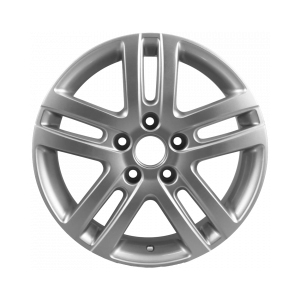oil drain plug replacement
Oil Drain Plug Replacement A Comprehensive Guide
Maintaining your vehicle’s engine health is crucial for its longevity and performance. One of the often overlooked but significant components in engine maintenance is the oil drain plug. The oil drain plug is a small but essential part that allows you to drain the engine oil, making way for fresh oil. It is crucial to replace it when it becomes worn or damaged to avoid oil leaks and ensure your engine runs smoothly. In this article, we will explore the importance of the oil drain plug, signs that indicate it's time for a replacement, and the steps to safely carry out the replacement process.
Importance of the Oil Drain Plug
The oil drain plug serves a fundamental purpose in the overall functionality of your vehicle's engine. It not only facilitates the change of oil but also seals the oil pan to prevent leaks. A functioning oil drain plug is essential for maintaining the right oil level within the engine, influencing lubrication and cooling. Should the drain plug fail or be left unchecked, it can result in catastrophic damage to the engine due to improper lubrication and oil starvation.
Signs You Need to Replace the Oil Drain Plug
Knowing when to replace your oil drain plug is key to preventing engine damage. Here are some common signs that indicate it may be time for a replacement
1. Oil Leaks If you notice any oil spots under your vehicle, particularly after an oil change, it may indicate a leaking drain plug. 2. Stripped Threads If you have difficulty tightening the plug because the threads are damaged, it is advisable to replace it. 3. Corrosion or Rust A drain plug that shows signs of corrosion or rust should be replaced immediately to prevent breakage or leaks.
4. Visible Damage Any visible cracks or deformities on the plug will compromise its integrity and should lead to a replacement.
Steps to Replace the Oil Drain Plug
Replacing the oil drain plug is a relatively simple process that you can do at home with the right tools and precautions. Follow these steps for a successful replacement
Tools and Materials Needed
- New oil drain plug (specific to your vehicle’s make and model) - Oil drain pan - Socket or wrench set - Torque wrench - Clean rag - Oil (for refill) - Safety gloves and goggles
Step 1 Prepare Your Vehicle
oil drain plug replacement

- Place your vehicle on a level surface and turn off the engine. Allow the engine to cool if it has been running. - Engage the parking brake and lift the vehicle with a jack and secure it with jack stands.
Step 2 Drain the Old Oil
- Position the oil drain pan beneath the oil pan. - Remove the old drain plug using a socket or wrench. Be cautious as the oil may still be warm. - Allow the used oil to drain completely for a few minutes, then remove the drain pan.
Step 3 Inspect the Oil Drain Hole
- Inspect the oil drain hole for any debris or damage. Clean it with a rag to ensure a good seal.
Step 4 Install the New Drain Plug
- Compare the new drain plug with the old one to ensure they are the same size and type. - Hand-tighten the new drain plug into the oil drain hole, then use a torque wrench to tighten it to the manufacturer’s specified torque setting. This ensures a proper seal without over-tightening.
Step 5 Refill Engine Oil
- Remove the oil fill cap on top of the engine and refill it with the appropriate amount and type of engine oil as specified in your owner’s manual.
Step 6 Check for Leaks
- Start your engine and let it run for a few minutes. Check for any signs of leaks around the new drain plug. - After confirming there are no leaks, replace the oil fill cap, and your replacement is complete.
Conclusion
Replacing the oil drain plug is a crucial step in maintaining the overall health of your engine. By understanding its importance, recognizing signs of wear, and knowing how to perform the replacement yourself, you can prolong your vehicle’s life and enhance its performance. Whether you're a seasoned mechanic or a car maintenance novice, these steps will guide you through the process effortlessly. Always remember to dispose of old oil and parts responsibly, contributing to a healthier environment. Happy driving!
-
Understanding the Front Main Engine Seal: Purpose, Maintenance, and Installation
News Jul.29,2025
-
Understanding O-Rings and Seal Rings: Types, Applications, and Custom Solutions
News Jul.29,2025
-
Understanding Crankshaft Oil Seals: Rear Seals, Pulley Seals, and Their Role in Engine Integrity
News Jul.29,2025
-
The Importance of Front and Rear Crankshaft Seals in Engine Performance and Oil Management
News Jul.29,2025
-
Crank Oil Seals: Functions, Types, and Cost Considerations in Engine Maintenance
News Jul.29,2025
-
A Comprehensive Guide to O-Rings and Seals: Types, Materials, and Global Applications
News Jul.29,2025
-
Mastering Diesel and Performance Engine Maintenance: A Guide to Critical Oil Gaskets
News Jul.28,2025
Products categories















